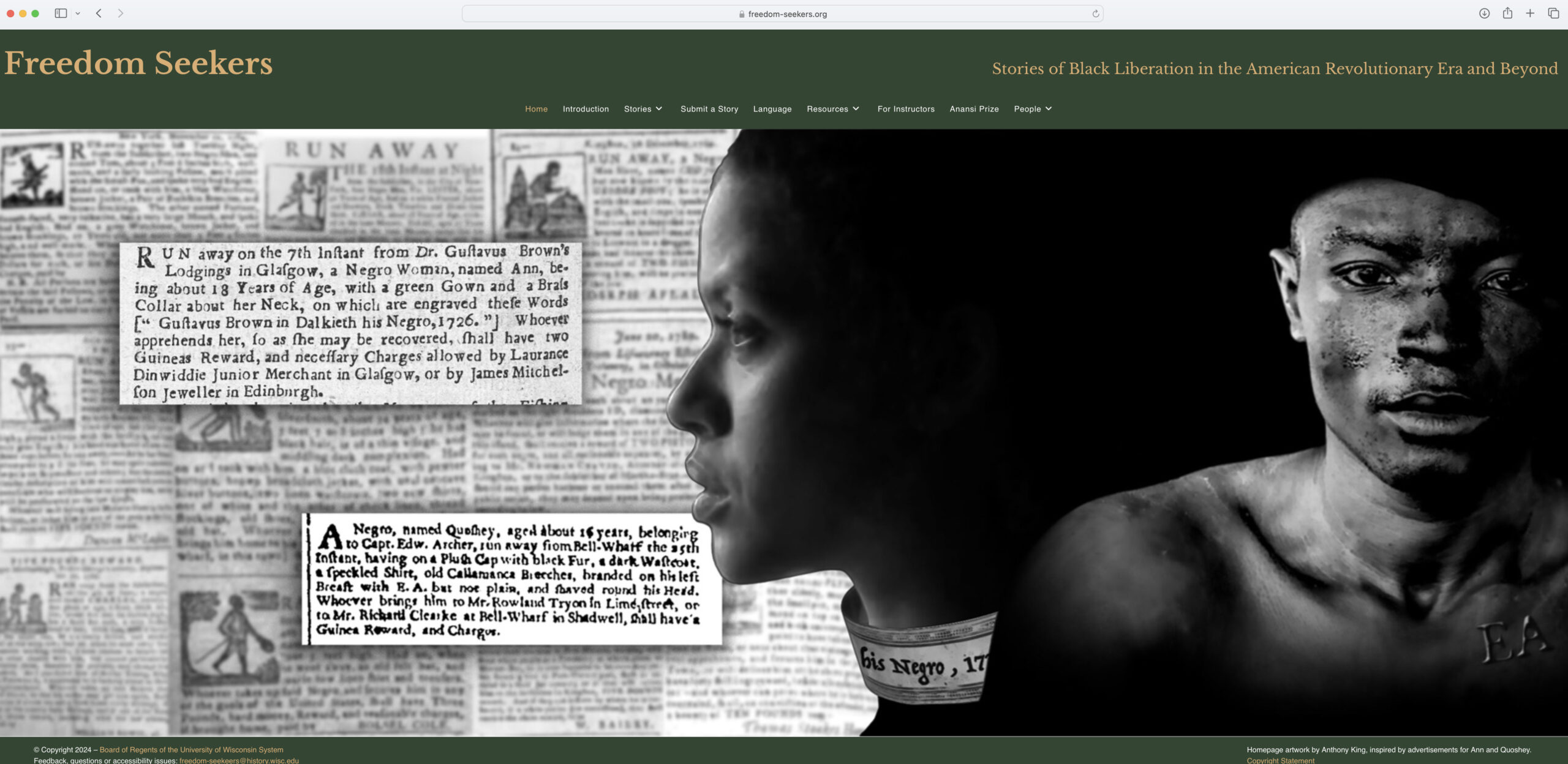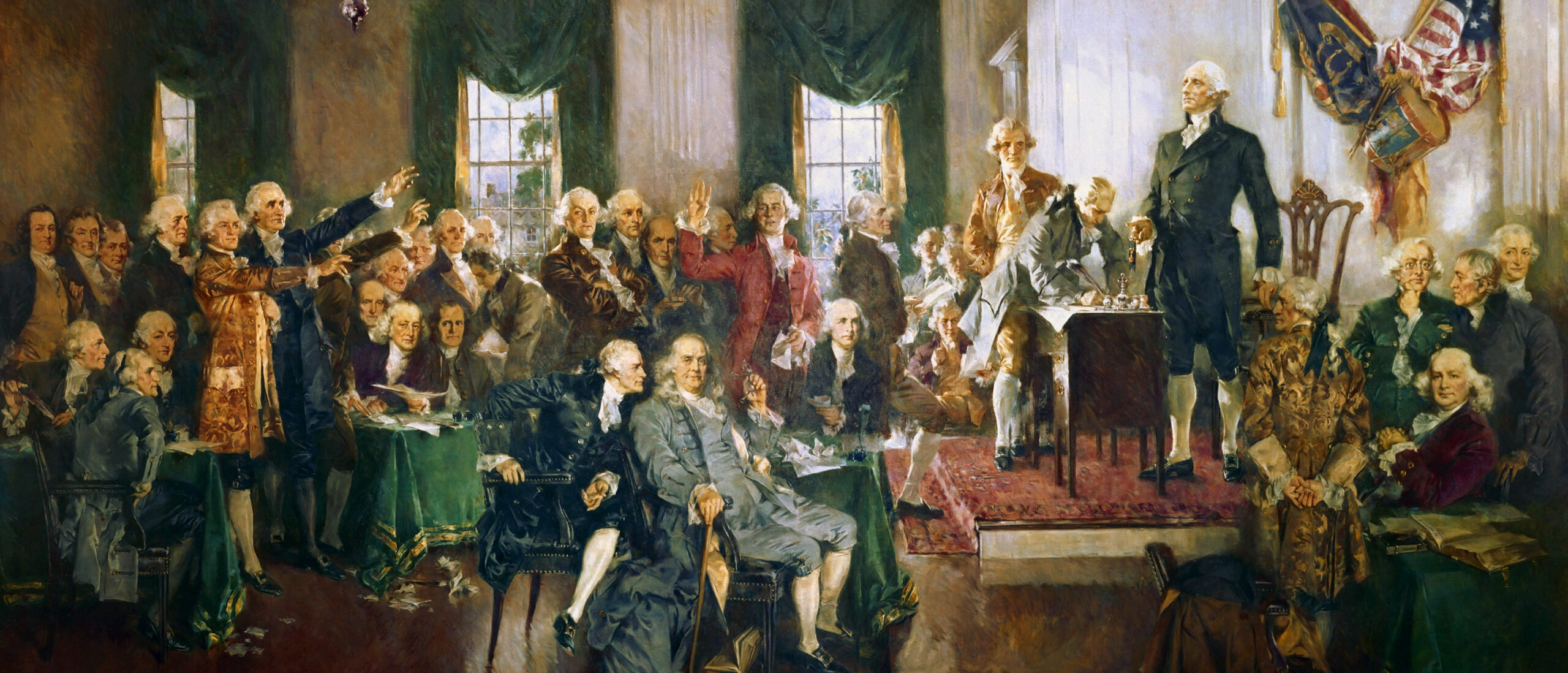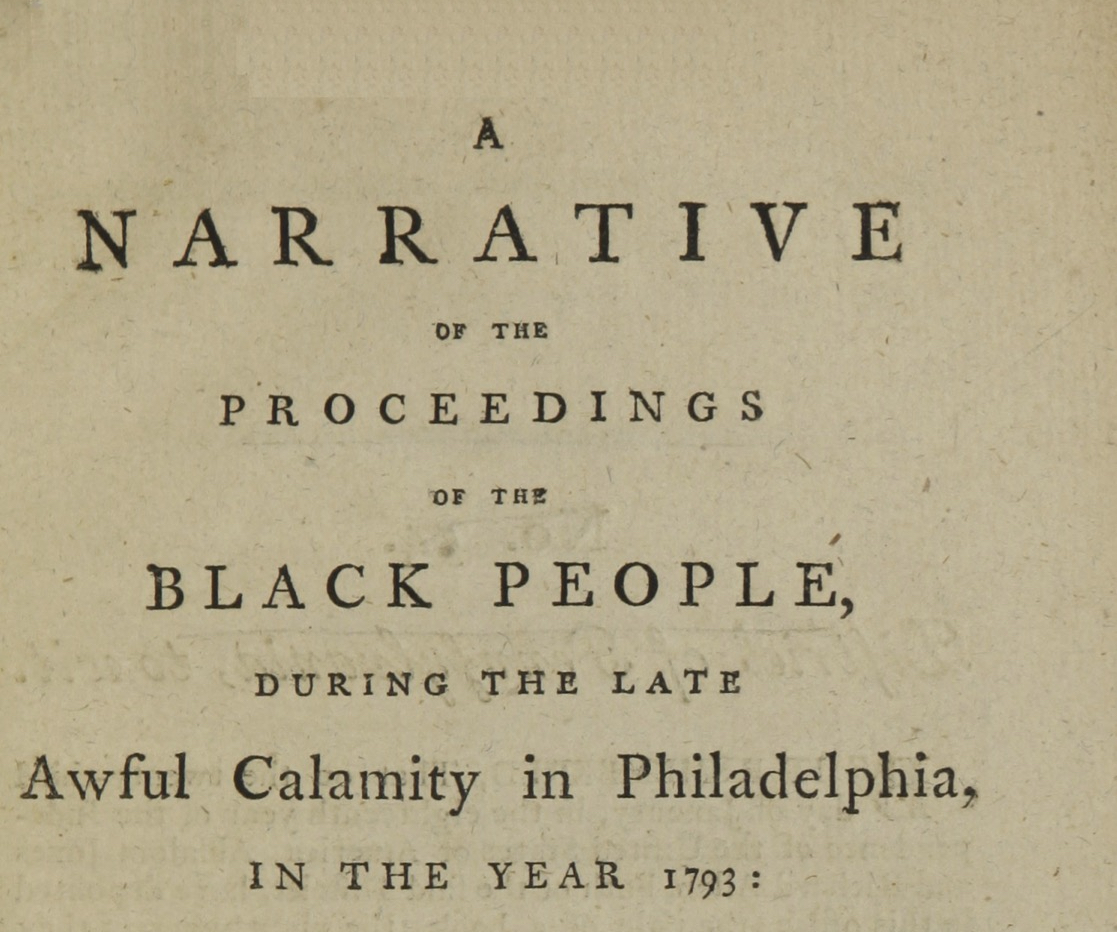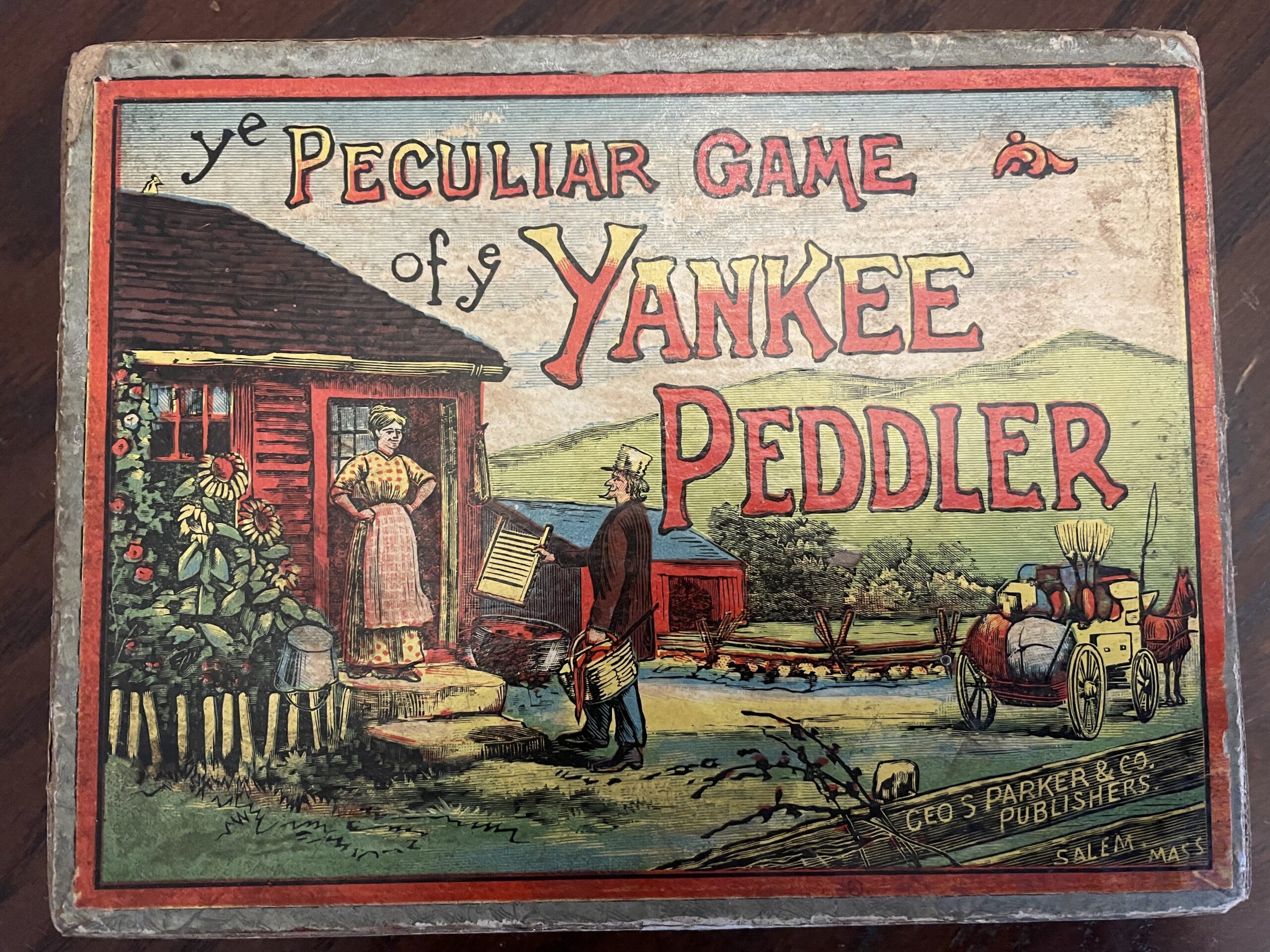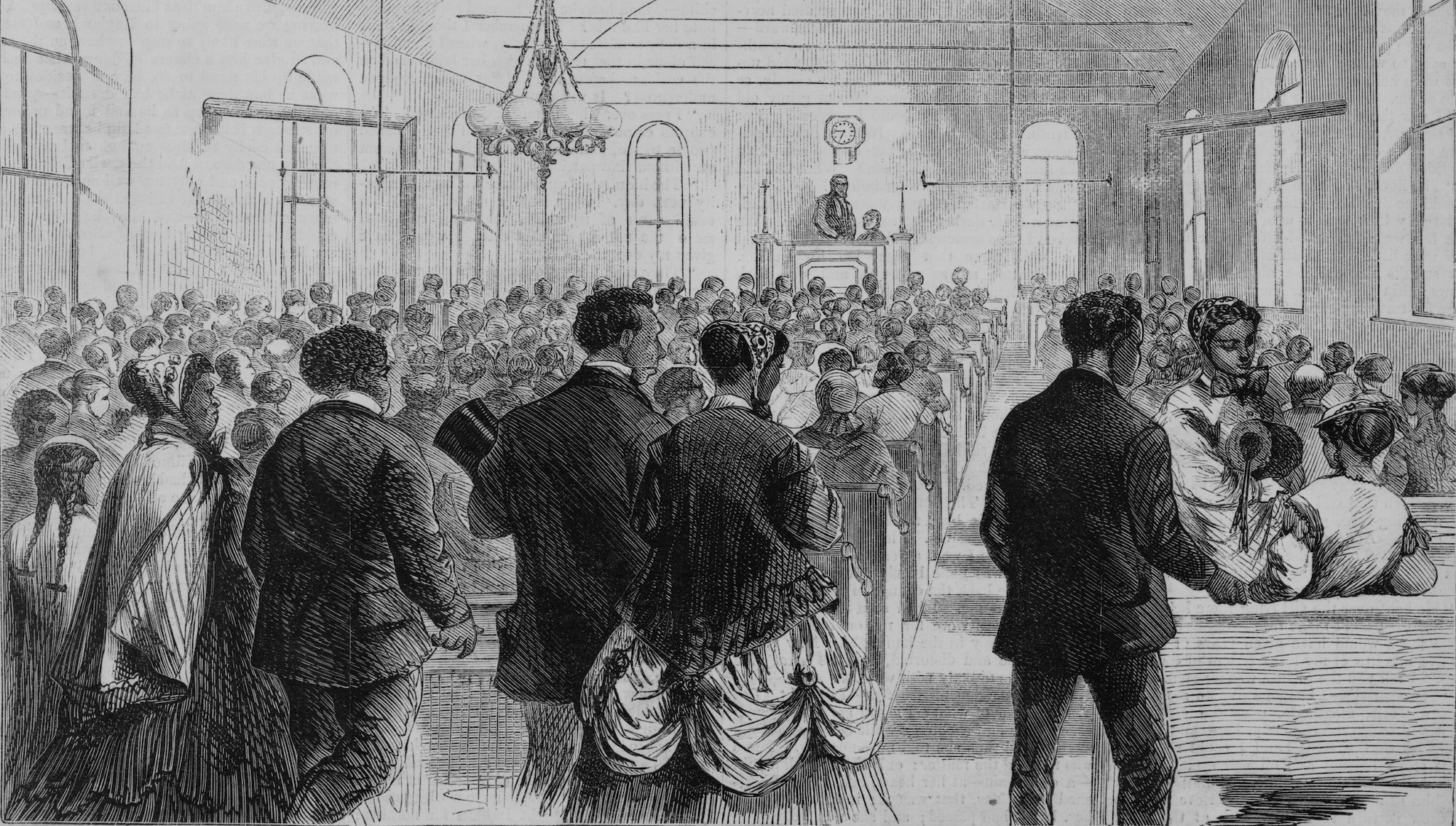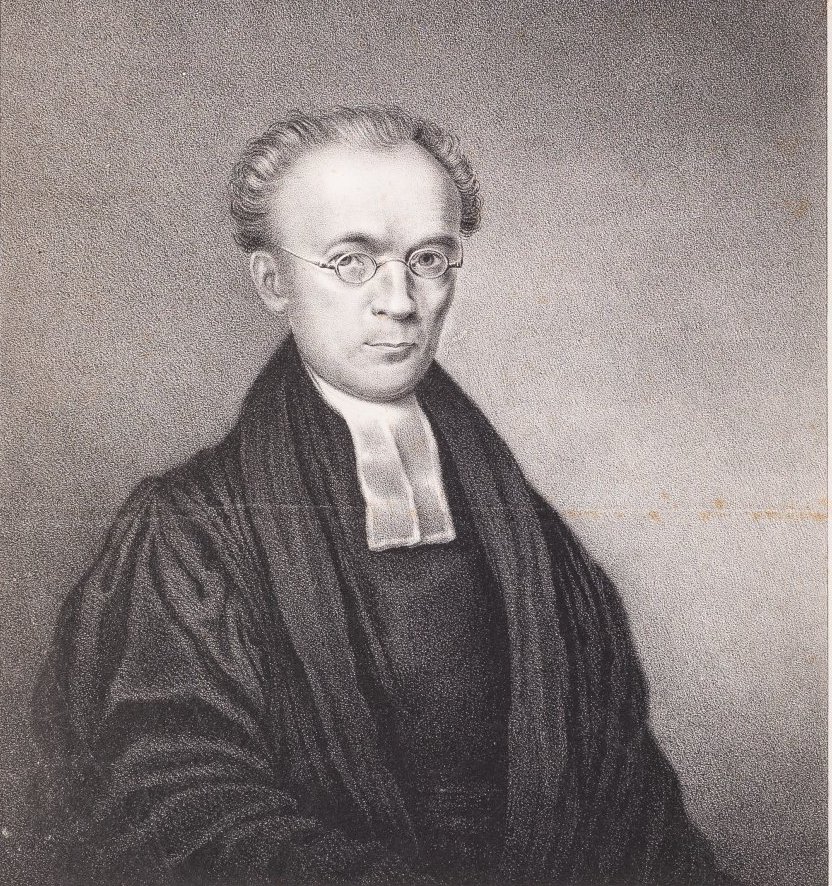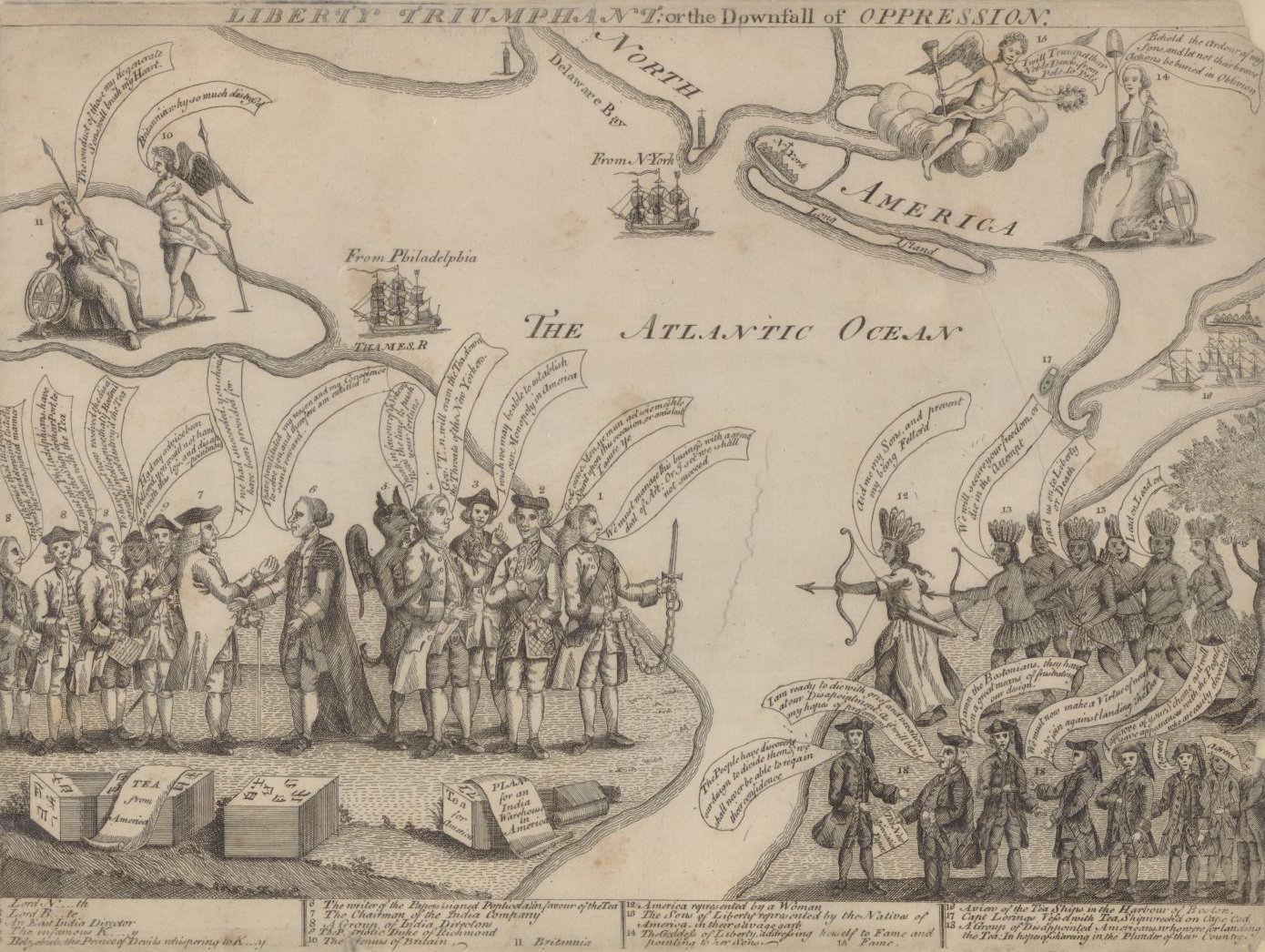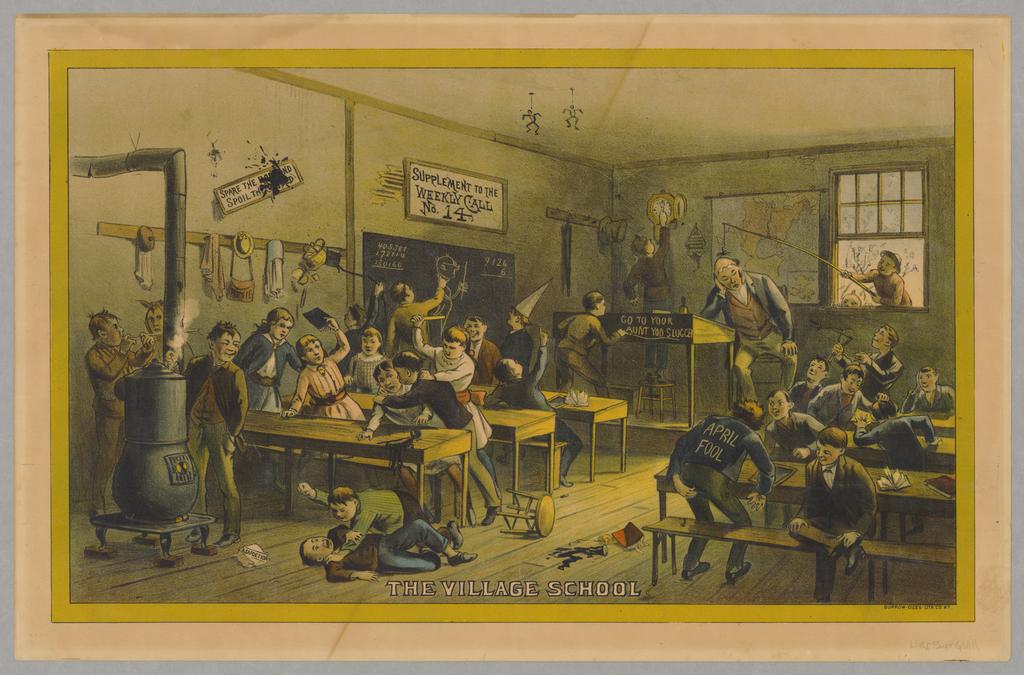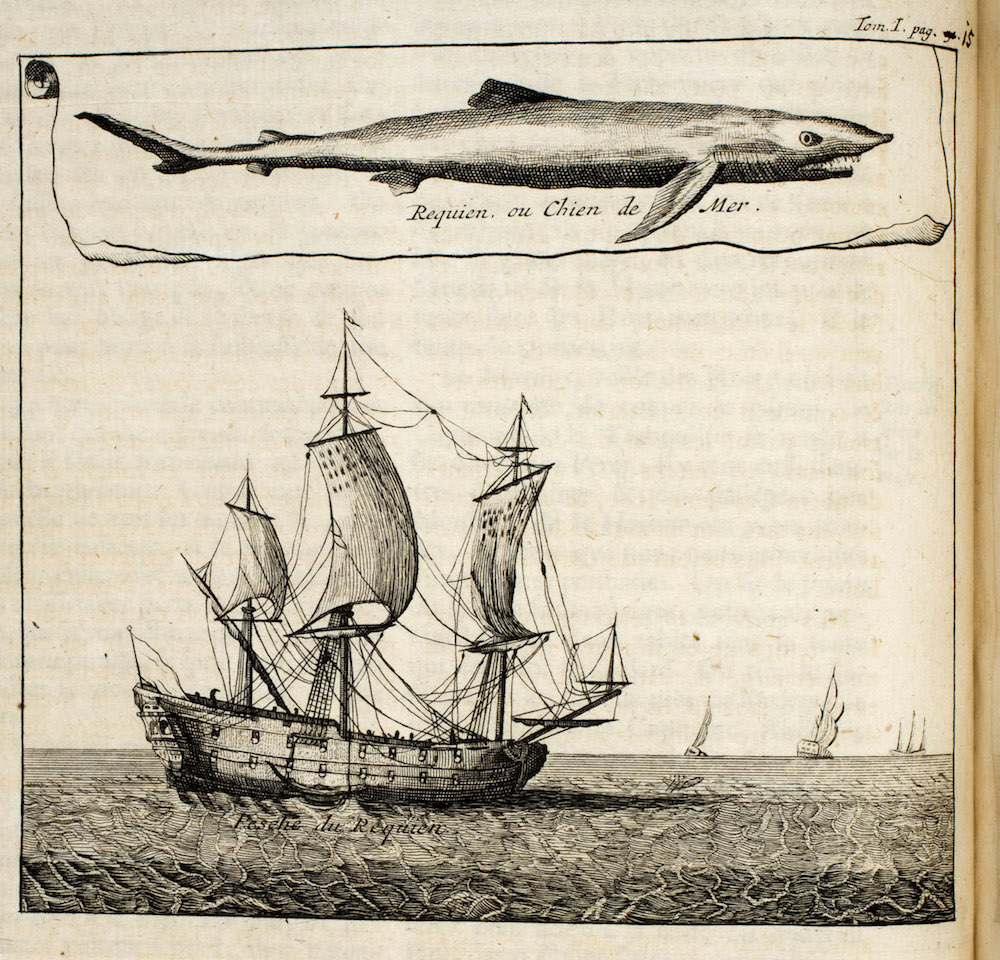Still a Prologue? The Stamp Act Protests at 250
Ask the Author typically features an interview with the author of a newly published work. However, because this fall marks the 250th anniversary of the protests against the Stamp Act in Britain’s North American colonies, we would like to do something a little different. Rather than profile a new book, we offer instead a reexamination of a classic work: The Stamp Act Crisis: Prologue to Revolution, by Edmund S. and Helen M. Morgan, first published in 1953. Ask the Author invited a group of distinguished scholars of Revolutionary America to participate in a forum on the continuing importance of The Stamp Act Crisis and where study of the Stamp Act crisis may move in the future.
What has The Stamp Act Crisis meant for your scholarship in thinking about the protests of 1765 and 1766?
Gould: When we think of the Stamp Act Crisis (in capital letters), we usually mean the parliamentary act and the American protests that greeted it—in provincial assemblies, along urban waterfronts, and in the colonial press. This was the crisis that the Morgans wrote about sixty years ago, and it is the crisis that still predominates in writing on the Revolution’s origins. But the Stamp Act was also part of a much larger crisis, one driven by the escalating cost of Europe’s colonial wars and the vexed question of how to pay for them. As befits the Act’s global scope, the consequences were not limited to Britain and eastern North America but affected British India, North America’s Indian Country, and the Caribbean, as well as France, Spain and, eventually, the United States, along with many other places. In The Persistence of Empire (2000), I focused on the British dimensions of that larger crisis, especially the role that English riots during the Seven Years’ War played in building support for the Stamp Act after the war was over. Among the Powers of the Earth (2012) follows the story into the early years of the American republic. In an irony that I think the Morgans would have appreciated, the memory of the Stamp Act ensured that the United States would be a far looser, more localized union than the British Empire, yet in attempting to turn that union into a “treaty worthy nation,” Americans had to grapple with the same fiscal problems that bedeviled Parliament in 1765.
Skeehan: Rereading Edmund and Helen Morgan’s The Stamp Act Crisis: Prologue to Revolution in 2015—over sixty years since its original publication—I was struck by an uneasy tension at the work’s center: while it sets out to tell the story of the Stamp Act crisis through the eyes and pens of a handful of Loyalist stamp collectors and officials, the “mob” continually disrupts this narrative and even threatens to destroy the very documents such a history would rely on. To put it another way, the tension enacted between the preserved nature of the written letters and printed documents that traditionally serve as scholarly “evidence” (in this text and in scholarship more generally) and the fleeting nature of the bodies, symbolic objects, and ritualized performative protests that, taking place in the streets of North American cities in 1765 and 1766, perhaps constituted the center or theater of action when it came to the lived experience of the Stamp Act crisis. Burned effigies, pillaged and dismantled homes, secreted stamp paper, confiscated and renegade vessels, unnamed and undifferentiated bodies acting en masse, and the Liberty Tree (itself symbolically felled by British soldiers in 1775) are the other actors in the Morgans’ 1953 work. The evidence and anecdotes at the periphery of the Morgans’ text show that resistance to the Act took place on the street as well as in newspapers, that colonists animated objects as well as words to vocalize their discontent, and that so-called mobs instigated by the Sons of Liberty borrowed cues from the theater as well as Enlightenment-era discourses. In my own work, I’ve been drawn to the “stuff” of the Stamp Act, and the Morgans’ text has helped extend the ways I think about the textuality of material objects, actions, and bodies as well as the materiality of texts.
Carp: No book on the events of 1765–66 has emerged to supplant The Stamp Act Crisis, and any investigation of this period must start with the Morgans’ analysis. The book’s principal argument (that Americans never made a distinction between internal and external taxes) occasionally resurfaces as a controversy, but nowadays we mostly appreciate the book for its complex portrayal of an important moment in the origins of the American Revolution.
The Morgans illuminated a broad cast of characters: the British politicians who argued over how best to fund the empire, the radical Americans who “stood Bluff” against the Stamp Act, and “the men who had urged submission and faith in the ultimate justice and wisdom of the mother country.” The authors call on us to empathize with all of these groups (though not the crowds who also mobilized against the Stamp Act).
I still marvel at the organization of the book. Rather than attempt a comprehensive (and “tedious”) chronology of Stamp Act resistance in every colony, the Morgans focused on particular people who wrestled with big ideas and their consequences. We can criticize their blind spots but I think we also ought to appreciate the artistry of the result.
Howell: I remember first reading Stamp Act Crisis in graduate school and being delighted by two things: the Morgans’ devotion to the gentle iconoclasm of subtlety—their interest in what is “cloudy in history” over what is “clear in legend” (93)—and their sense that even in work that’s keenly interested in politics and economics, there ought not be a bright line between historical inquiry and literary inquiry. Both of these things become really clear in the middle of the book where the Morgans tell the story of Patrick Henry’s resolutions against the Stamp Act in the Virginia House of Burgesses, passed in May 1765.
With respect to cloudiness, the Morgans follow a fragmentary and subjective historical record in order to present a Henry who triangulates and temporizes: he’s against Parliament’s decision to impose a stamp tax on the colonies and he promotes legislation to resist it, but he’s not yet the “Give me liberty or give me death” guy. For someone trying to figure out how American colonists started to say yes to armed rebellion—and to figure out how we, as historians and literary critics, might represent the difficulty of doing so—the Morgans’ willingness to sit with Henry’s complexity was inspiring. Their commitment to exploring the oft-mystifying necessities and procedures of bureaucracy over heroic myths of individuated resistance struck (and continues to strike) me as exemplary.
In this same chapter about Henry’s House of Burgesses resolutions, we can also see how the Morgans acknowledge the coincidence of literary criticism and history. The official record of the House of Burgesses shows four of Henry’s resolutions adopted, the most pointed of which forwards the relatively mild claim that the people of the colony have “without Interruption enjoyed the inestimable Right of being governed by such Laws, respecting their internal Polity and Taxation, as are derived from their own Consent.” As the Morgans show, however, versions of these resolutions printed (and reprinted) in colonial newspapers differ considerably from the official record. Under the sign of “Resolves of the House of Burgesses in Virginia, June 1765,” for example, the Maryland Gazette printed seven resolves, the last of which casts anyone who thinks that Parliament might under any circumstances have the authority to impose any kind of tax on the colonies as an “’Enemy’ to Virginia.” That’s a big difference—one is an abstract statement of rights, and the other is a rationale for beating up your neighbor! Of course, nowhere in the Gazette is there any kind of statement alerting readers to those differences or pointing out that the latter resolve was never passed (and possibly never even proposed)— there is only that neutral and seemingly authoritative title. As the Morgans show, what offers itself as reportorial is, then, profoundly editorial: in the Gazette, the Burgesses are made to fit a narrative of universal resistance that the newspaper and its exchange network have been promoting, regardless of what actually happened on the House floor. Pointing this out, as the Morgans have here, yields the very best kind of high-stakes literary history—where something like tracking changes in a document can give you real insight into what’s going on in the culture.
Perry: There is a little something for everyone in Edmund and Helen Morgan’s The Stamp Act Crisis. A bold attempt to “recreate two years of American history,” the work travels widely from chapter to chapter—tracing imperial structures, politics, and reform; analyzing the language and justifications for the anti-stamp protests; and examining the experience of crowd violence from the victim’s perspective. The first time I read this book along with the accompanying primary source collection Prologue to Revolution: Sources and Documents on the Stamp Act Crisis, 1764-1766, I was excited to discover the sheer variety and volume of questions one could ask about this “Crisis.” Like many younger scholars, The Stamp Act Crisis was not the first work I read on colonial protests and mob action. In a college course on the protest tradition in American history, I encountered the “bottom up” approach and work of the New Left social historians who challenged scholars to think about the members of the crowd. When I first read the Morgans’ work a few years later, I was initially struck by the entirely different set of questions they asked, and in particular, the ways in which they integrated imperial politics into the local disruptions. Although the title would suggest a passing “Crisis” moment, the Morgans demonstrate why protest on the street and bold statements by colonial Assemblies occurred in 1765. The challenge I saw for my own scholarship was how to integrate this imperial and ideological approach with the actions and choices of individuals and communities on the street.
Protest is exceptional, and by highlighting the long-developing imperial tensions, the postwar reforms and regulations, the role of petitioning and lobbying, and ultimately the appearance and spread of colonial dissent, The Stamp Act Crisis explains why this “contagion” occurred and spread in response to a relatively small tax. Each time I reread The Stamp Act Crisis, I am struck by the quality of the writing (which at times masks a questionable use of evidence) and the variety of approaches the Morgans used to argue their points—in one chapter they essentially trace the rhetorical evolution of colonial constitutional claims, in another they explore the perspective of the victims of crowd action, and in another go across the colonies to trace the impact of the protests on the ports and courts. Throughout, they raise questions that all historians of the Revolution grapple with, particularly, the use of existing sources, the nature of loyalty and commitment, and the legitimacy of crowd action. At the same time, for all that they cover, there is much missing from the account. Due in part to the age of the book, their work also prompts a modern reader to ask more questions, particularly looking for a wider cast of characters than the Morgans trace. A modern reader cannot make it through the work without asking serious questions about race, gender, class, and identity missing from this volume.
What have been the most promising developments in scholarship on the Stamp Act Crisis since the publication of the Morgans’ work?
Perry: Scholars working on the Stamp Act Crisis period today face many of the same challenges as the Morgans did a half century ago—a relatively limited source base confined primarily to reports by imperial officials, tax collectors, and customs officers, as well as newspaper accounts and the rare diary entry. The most promising developments in scholarship, then, have not necessarily come from the location of new sources, as much as new questions and new ways of critically examining the sources analyzed by the Morgans in The Stamp Act Crisis. As we reach the 250th anniversary of the Stamp Act protests, many scholars are reconsidering the meaning of this imperial crisis to the larger move toward Revolution. Later this year, a new collection edited by Zach Hutchins, Community without Consent: New Perspectives on the Stamp Act, will be published by Dartmouth College Press and will present many of these new insights and avenues of current research.
With each subsequent edition of The Stamp Act Crisis, Edmund Morgan commented upon the rapidly shifting debates regarding this initial moment of imperial disruption leading to the American Revolution. In particular, developments in crowd studies in the decade directly after publication challenged many of the core interpretations offered by the Morgans of the nature of colonial protest. Readers today would be surprised to read the Morgans’ relatively uncritical account of the mob as merely a group of lower class men manipulated, guided, and controlled by the “better sort” of political thinkers. The Morgans’ descriptions of riots and street protest fit into an older line of interpretation, one that follows the sources’ own bias: that the leaders of the mob must be unmasked, but the members of the colonial crowd had no real political will or imperial stake in the constitutional crisis. Missing entirely is the idea that lower-class people could make rational choices and act upon their own political beliefs and imperial identity as Britons. Similarly, the actions of the many free and enslaved African Americans as well as women in these port communities are entirely missing. Rather, the mob as described in The Stamp Act Crisis is one that was, to varying degrees of effectiveness, corralled, manipulated, and used by their betters in service to a political agenda.
In his response to the challenge posed by historians to reinterpret the colonial crowd “from the bottom up,” Morgan dismissed the neo-progressives as seeking “a perspective not easily achieved and subject to many temptations.” While acknowledging the need to reconsider the role of the inarticulate, Morgan criticized new social historians for “putt[ing] one’s own words into the mouths of the wordless.” Morgan himself falls into this trap when writing from the perspective of the upper-class victims of mob violence. Perhaps Morgan was right to criticize early class-based attempts at history from the bottom up; however, the recent cultural turn in the study of the American Revolution offers perhaps a better path to understand how laboring people might have interpreted and participated in these protests as members of communities and the British Empire. Work on religion, identity, cultural performances, and even the economics of dock communities all help to better understand the dynamics of the mob.
Howell: To me, the most promising developments in scholarship on the Stamp Act have taken the Morgans’ subtilizing approach to the problem of American independence even further. I’m thinking in particular of recent work on Loyalists, fence-sitters, and other people living in the colonies uncertain about the American revolutionary project. Philip Gould’s Writing the Rebellion (2013), for example, does a wonderful job of reading the Stamp Act through the eyes of those who didn’t see independence as a salutary possibility—and who saw arguing about the finest points of literary form as high political warfare.
There has also been a spate of really interesting work on the Stamp Act and popular protest since Stamp Act Crisis was published. Dirk Hoerder’s Crowd Action in Revolutionary Massachusetts, 1765-1780 (1977), for example, is both a greatest-hits collection of street protests and a sensitive inquiry into the mechanics and philosophical underpinnings of popular demonstrations. Benjamin Carp’s Rebels Rising (2007) thinks brilliantly about the urban landscapes that nurtured popular resistance to the Stamp Act; Nicole Eustace’s Passion is the Gale (2008) takes up both the emotional impact of the Stamp Act Crisis and the ways in which sentimental discourse was mobilized against it. Alfred Young’s The Shoemaker and the Tea Party (1999) revisits one of the Morgans’ best working-class agitators, Ebenezer McIntosh, at a slightly later moment in his career. More delicate strains of resistance—especially in the form of consumer actions—have also been taken up with a great deal of productive energy. I’m thinking here of work like T. H. Breen’s Marketplace of Revolution (2004), which relates the non-importation agreements that emerged in the wake of the Stamp Act to broader ideas about the ideological weight of material culture and the political power of the purse.
Skeehan: Studies of the material objects that colonists animated as props and actors in the scenes of popular protest have examined the non-importation and non-consumption agreements that called colonists to refrain from purchasing the “baubles of Britain,” as well as appeals to women to produce their own homespun cloth in lieu of purchasing imported textiles. For instance Laurel Thatcher Ulrich, Kate Haulman, and Linda Baumgarten, among others, have examined how homespun politicized the domestic sphere and provided women an avenue through which to participate in political discourse. Widening our geographic focus to include actors performing on an Atlantic rather than simply a North American stage, Andrew Jackson O’Shaughnessy has explored the ways in which West Indian colonists likewise resisted the Act. In turn, scholars have expanded the range of written and printed documents that have traditionally served as evidence in our accounts of the Stamp Act crisis and have invited us to look beyond newspapers and pamphlets in order to consider broadsides and the fleeting, ephemeral printed stuff churned out by colonial presses. Bringing some of these new approaches together, a panel at last summer’s joint conference of the Omohundro Institute of Early American History and Culture and the Society of Early Americanists in Chicago, titled “Theaters of Dissent in the Atlantic World,” featured papers from Peter Messer, Max White, Michelle Sizemore, and Peter Reed that reexamined scenes of popular protest through the lens of performance studies and explored the ways in which the “mob” borrowed from a lexicon of performative strategies and traditions made recognizable by theaters and street theatricals, churches, and state sponsored spectacles and celebrations throughout the Atlantic.
Carp: The most important new interpretations of the Stamp Act crisis have come from the neo-progressive and neo-imperial schools. (The Morgans were arguing strenuously against the paleo-progressive and paleo-imperial schools.)
Social historians of the American city—Dirk Hoerder, Gary Nash, Sheila Skemp, and many others—have given us rich interpretations that are vital to understanding the dramatic crowd actions of 1765 and beyond. What the Morgans dismissed as an “infection” or “contagion” of “disgraceful” mobs turned out to be a moment of striking insight into the mobilization of the coastal cities. The Morgans may have given us the perspective of leading radicals and the “friends of government,” but we also needed further information about the popular response to the Stamp Act.
In addition, the broader imperial picture remains essential to understanding the Stamp Act crisis: Fred Anderson, Eliga Gould, P. J. Marshall, Andrew O’Shaughnessy, and Peter D. G. Thomas, for instance, have been helpful in this regard. These authors have given us a much greater sense of metropolitan Britons’ understanding of parliamentary legitimacy, and how different the mainland colonists’ views were on this same point. (Most Caribbean merchants and planters, by contrast, pursued a separate strategy of conciliation and lobbying for preferential treatment.) Furthermore, these scholars have helped us see just how much Parliament’s search for revenue was related to its desire for stability in the trans-Appalachian West.
A few authors have offered interesting analyses of the rhetoric and iconography generated by the Stamp Act protests. While it’s too early to say how cultural history will shift our thinking, there has been some provocative recent work and I look forward to seeing how it plays out.
Gould: For the Morgans, the Stamp Act Crisis was an exclusively British affair, with most of the action occurring on the North American mainland. Over the last two decades, historians have expanded the geographical scope of the crisis in two areas. First, in a development that can be traced to the work of John Brewer and Linda Colley, both of whom were for a time colleagues of Edmund Morgan at Yale, a generation of British historians has produced a deeper, more nuanced account of the Stamp Act’s metropolitan origins and aftermath. I’m thinking of the work of Kathleen Wilson, Paul Langford, Marie Peters, Bob Harris, and Stephen Conway, as well as my own early work. The result is a picture not of high political arrogance and inattention, which is how the Morgans characterized the measure’s British architects, but of broader, widely held attitudes that made the misguided act appear both necessary to the British public and, according to some people, reasonable. We also know a great deal more than the Morgans did about the many British men and women who sympathized with the Americans and who used those sympathies to mount their own popular protests and movements for reform in Britain. The second development has been to recover the Stamp Act’s global and imperial dimensions. Here, the work of P.J. Marshall on connections between the crises in British India and America before the revolution has been enormously important, as has Andrew O’Shaughnessy’s scholarship on the British Caribbean and Fred Anderson on Pontiac’s War and the Stamp Act’s origins. Equally significant is the growing literature on the French and Spanish empires and the willingness of American historians to pay attention. After perusing the work of J.H. Elliott or Stanley Stein and Barbara Stein on the Spanish Bourbon reforms of the 1760s and 1770s, only the most blinkered reader could think of the Stamp Act Crisis or any other part of Britain’s “Hanoverian reforms” as isolated events.
What’s next? In what areas are scholars most likely to develop new insights into understanding the Stamp Act protests in coming years?
Skeehan: In many ways, the primary source materials made available by the Morgans’ 1953 work continue to offer scholars of the Stamp Act different avenues for sifting through the materials, anecdotes, actors, and texts that make up the stuff of this particular moment in the history of empire. These sources have also fostered new “turns” in early American studies: spatial turns that spiral out to include the Caribbean and other sites of imperial order, corporeal turns that look to performance studies, and material turns that broaden our understandings of what constitutes evidence in an increasingly interdisciplinary field. For those of us interested in the stuff of the Stamp Act, we might explore the ways in which material culture as a field of evidence can contribute to two lines of inquiry that seem important to early American literary studies right now: critiques of the inclusivity of print and, in many ways related, renewed interest in performance cultures. First, examining the extra-textual may help support recent reevaluations of the central role that print culture and a print public sphere played in fostering the American Revolution and later constituting an imagined national community. After all, the documents written by Loyalists and Republicans alike also constitute the stuff of the Stamp Act, just as stamped paper—even before it is circulated within a print public sphere—embodies ideas and represents complex social, economic, and political relationships. And second, in the vein of the panel mentioned earlier, we might further explore how what seemed riotous was, in fact, highly orchestrated performance; what seemed like undifferentiated bodies over-running public spaces were in fact bodies coming together to think of themselves as a public. In other words, new directions in the study of the Stamp Act might continue to move us away from the print culture thesis and to challenge the primacy of a print public sphere to which many colonists had only limited access. Instead we might begin to think about how objects are animated and bodies are objectified—how effigies speak and how brutally tarred and feathered bodies “signify.”
Carp: In 1957, Morgan called on historians to study “the local institutions which produced the American Revolution,” a project that is still unfinished. In particular, I get asked all the time (often by high school students) about the Sons of Liberty. The public is fascinated with this shadowy institution that had helped to drive the Stamp Act protests. And while I stand aside for no one in my admiration for Pauline Maier’s From Resistance to Revolution, I think historians will have more to say about this group.
Let’s also remember: from the perspective of most colonial Americans, the Stamp Act may not have been all that significant in the coming of the American Revolution. John Brooke suggested this idea in a Reviews in American History essay on T. H. Breen’s Marketplace of Revolution, but it’s obvious when you read a book like Robert Gross’s The Minutemen and Their World: before 1774, most country people just weren’t paying attention to imperial politics. Was the Stamp Act crisis the start of widespread, sustained resistance, or just a flash in the pan? I still believe in the broader significance of urban protest movements, but I also find it useful to consider this question. Brooke also argues (in a footnote) that we need to know more about the impact of court closings in 1765–66.
Gould: Despite the work of the last two decades, there is still a tendency among both American and British historians to treat the Stamp Act as an aberration, a departure—even a Tory or neo-Tory one—from the principles by which the British colonies were governed before the 1760s and that Americans would seek to preserve after 1776. This tendency, as Tom Slaughter has recently argued, overlooks earlier imperial tensions and conflicts, many dating to the early eighteenth century, if not before. It also, it seems to me, misses the Act’s central point. The Stamp Act was an act of imperial and national integration. Its purpose was not to differentiate the colonies from Britain, as Americans claimed, but to bring them into the fiscal system by which the British fulfilled their obligations to the crown. Far from an aberration, it was a natural, if ill-conceived, successor to the Anglo-Scottish Union of 1707, as well as a precursor, as people at the time recognized, to Britain’s union with Ireland. No less important, it was a precursor to the American union of 1776, and it set the stage for the Articles of Confederation and the Constitution. For that reason, the protests of 1765 and 1766 have also remained part of American history—animating Daniel Shays’ tax revolt in western Massachusetts, the Whiskey Rebellion of 1794 and, according to the South Carolina Convention in 1860, the opening shots of the Civil War. As the Morgans argued, the Stamp Act Crisis was a prologue to the American Revolution, though not the only one. As we observe the 250th anniversary, I think it’s worth remembering that it was the prologue to a great many other things as well.
Perry: The Stamp Act Crisis focuses primarily upon the colonies that joined the movement for American independence, with the crisis playing a deciding point on the road to Revolution. Many scholars currently working on the Stamp Act Crisis have cast doubt on the relationship between the protests of 1765 and the later Revolution. Scholars of the British Empire and the Greater Caribbean are developing a better sense of the relationships between mainland port communities and West Indian sugar islands, particularly during this political and trade crisis. What emerges from this wider geographic lens is less of a road to revolution, but rather a period of experimentation to influence empire, shifting strategies of dissent in streets and in Whitehall, and a long-term commitment to Empire among most port communities. Similarly, studies of the American Revolution have raised awareness of the widespread disaffection and uneven allegiances of many individuals during the Revolutionary War, presenting a challenge for interpretations that would have clear, absolute loyalties formed in the prewar decade. The Morgans themselves raised the question of the nature of loyalty and the American cause in their investigation of individuals associated with the Stamp Act disorders. What emerges in present studies, including my own research, is the sheer diversity of lessons and experiences that American individuals and communities took from the successful repeal of the Stamp Act. The Stamp Act Crisis then, is less clear as the “prologue to Revolution,” unless you consider that prologue presaging a revolution that would become a continuing contest over the meaning and shape of home rule.
Howell: Just like Ben and Danielle say above, I think there is still probably more to learn about the complex and shifting vernacular response to the Stamp Act. And though I think Danielle is absolutely right that moving away from a print-centric model has the most to offer in this respect, it seems to me that there remain some understudied texts that might also be useful. My own inclination would be toward poetry: poems aren’t always great at conveying clear political principles, but they can be way better than other sorts of writing at capturing the internal conflicts of individual actors.
Take something like Hannah Griffitts’s “The Female Patriots, Addressed to the Daughters of Liberty in America.” Griffitts was a coterie poet living in Philadelphia who, as Karin A. Wulf points out, wrote vehemently in favor of political moderation. “Female Patriots” is not about the Stamp Act, exactly—it’s from 1767, and seems to have been written on the occasion of the Townshend Acts—but it presents a complex gendered response to a similar imperial crisis. In some ways, the poem is just what you think it might be from a politically invested woman of the middling sort living in Philadelphia: it offers praise of homespun and promotes the idea that concerted consumer action could affect imperial policy. The beginning of the poem, however, is rather more complicated.
“Since the Men from a Party, or fear of a Frown,
Are kept by a Sugar-Plumb, quietly down.
Supinely asleep, & depriv’d of their Sight
Are strip’d of their Freedom, & rob’d of their Right.
If the Sons (so degenerate) the blessing despise,
Let the Daughters of Liberty, nobly arise,
And tho’ we’ve no Voice, but a negative here.
The use of the Taxables let us forbear[…]”
The speaker’s evident frustration with the Townshend Acts does not conform to traditional patriot/loyalist binaries. What we see instead is something more like thoroughgoing contempt for all of the men involved with the Acts—not only the “Sugar-Plumb” who dreamed them up and the partisans who smoothed their passage through Parliament, but also the “degenerate” American resisters—those nominal Sons of Liberty who seem to have repudiated their birthright, presumably by coordinating mob actions or other ignoble things. Real nobility is here reserved for dissenting women, who can at once be said to have “no Voice” and to assume the royal prerogative of the “negative” in the service of American interests. (Here the consumer boycott and the political veto are neatly aligned.) The poem as a whole, then, shifts us away from its mere occasion into the murkier waters of what it might mean to be gendered, to be colonial, or to be disenfranchised in 1760s America. As in The Stamp Act Crisis, what initially claims our attention as another form of broad political statement winds up suggesting those variable currents of subjective experience that our political histories all too often overlook.
This article originally appeared in issue 16.1 (Fall, 2015).
Danielle Skeehan is an assistant professor in the English department at Oberlin College, where she specializes in early American literature, material culture studies, book history, and Atlantic world studies. Her current book project, “The Fabric of Early Atlantic Letters: Gender and Media in the Eighteenth Century,” examines the material and symbolic connections between texts and textiles in this period.
Benjamin L. Carp is the Daniel M. Lyons Professor of American History at Brooklyn College, CUNY. He is the author of Defiance of the Patriots: The Boston Tea Party and the Making of America (2010) and Rebels Rising: Cities and the American Revolution (2007).
Molly Perry is currently a lecturer in history at Christopher Newport University, and completing her PhD at the College of William and Mary. Her dissertation, “Influencing Empire,” explores dynamics of protest and methods of persuasion in port towns of the Greater British Caribbean from 1764-1769, highlighting in particular the actions of free and enslaved African Americans, sailors and the dockside community, as well as agents and lobbyists.
William Huntting Howell is an assistant professor of English at Boston University. He is the author of Against Self-Reliance: The Arts of Dependence in the Early United States (2015).
Eliga Gould is professor of history at the University of New Hampshire. His most recent book is Among the Powers of the Earth: The American Revolution and the Making of a New World Empire (2012). He is currently writing a global history of the American Revolution.









